Miscellaneous Ramblings
An Affectionate Farewell to Kodachrome
Charles Moore - 2009.06.23 - Tip Jar
Many years ago, back in the '70s, I made my living for a time as a wedding and portrait photographer, and I was also a serious photography hobbyist. I shot weddings on negative film, of course, but for my personal photography Kodak's Kodachrome was my film of choice by a wide margin, with its rich, deeply saturated (but not over-saturated) colors, long latitude (detail in shadows with a dynamic range of roughly 8 f-stops), and fine grained image clarity.
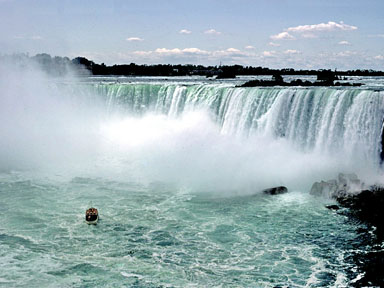
Niagara Falls shot on Kodachrome
To say I was a Kodachrome enthusiast would be an understatement, and I could sing along with complete solidarity with Paul Simon's eponymous ditty, released as a hit single (it reached number 2 on the Billboard Hot 100 chart), and on his "There Goes Rhymin' Simon" album in 1973, which coincidentally probably marked the apogee of my Kodachrome use. I used an Olympus OM-1 SLR - not a Nikon like Paul Simon - but I admired Nikons too.
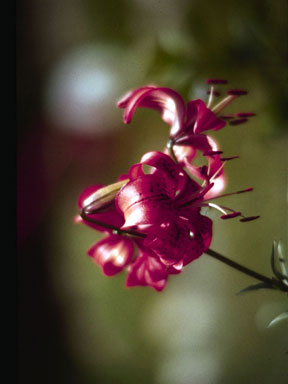 Back then, I couldn't have imagined
Kodak discontinuing Kodachrome, but alas it's happened - after 74 years
of production Kodak announced on Monday that it's taking Kodachrome
away.
Back then, I couldn't have imagined
Kodak discontinuing Kodachrome, but alas it's happened - after 74 years
of production Kodak announced on Monday that it's taking Kodachrome
away.
The reason, of course, is that so few people buy it any more. "Kodachrome Film is an iconic product and a testament to Kodak's long and continuing leadership in imaging technology," said Mary Jane Hellyar, President of Kodak's Film, Photofinishing, and Entertainment Group in a news release. "It was certainly a difficult decision to retire it, given its rich history. However, the majority of today's photographers have voiced their preference to capture images with newer technology - both film and digital."
Too true. I haven't shot a roll of Kodachrome for literally years, having switched almost entirely to digital photography, as have the vast majority of photographers - both amateur and professional. Even most folks who still are working with film are using other process types.
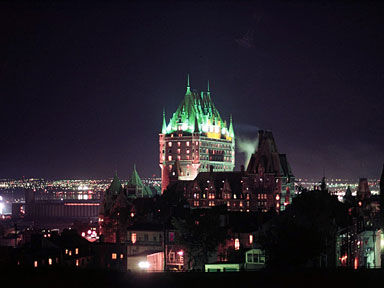 Kodak, which now derives
about 70% of its revenues from its commercial and consumer digital
businesses, no longer even processes Kodachrome in-house, as it was
doing at full tilt when I made a pilgrimage to Rochester, New York, and
toured the Kodak plant in 1975. The company discontinued film
processing in 1988, and the sole Kodachrome processing facility left on
the planet is Dwayne's Photo
in Parsons, Kansas, which has indicated that it will continue to
process Kodachrome though 2010, after which the Kodachrome era will
truly be over.
Kodak, which now derives
about 70% of its revenues from its commercial and consumer digital
businesses, no longer even processes Kodachrome in-house, as it was
doing at full tilt when I made a pilgrimage to Rochester, New York, and
toured the Kodak plant in 1975. The company discontinued film
processing in 1988, and the sole Kodachrome processing facility left on
the planet is Dwayne's Photo
in Parsons, Kansas, which has indicated that it will continue to
process Kodachrome though 2010, after which the Kodachrome era will
truly be over.
Of course, one of the drawbacks of using Kodachrome was that it had to be shipped off for processing (by Kodak here in Canada, where it was sold with processing charges included and a mailer envelope in the box - a modality that was ended in the US in 1954, as a result of a United States v. Eastman Kodak Co. court ruling that declared it anticompetitive), which wasn't as bad as it sounds back when even local film processing was likely to take a week or so.
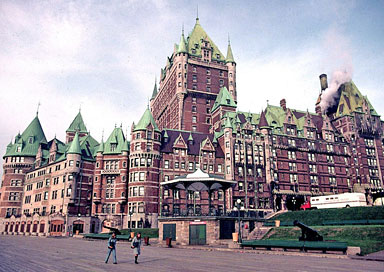 Kodachrome was always a
premium-priced product - much like Apple computers are today - and that
definitely wasn't helped as postal rates soared into the stratosphere
in the '70s and '80s. A further blow was delivered when one-hour (or
less) processing operations came on stream. Dwayne's charges $6.99 for
developing a 24 exposure roll, $9 for 36.
Kodachrome was always a
premium-priced product - much like Apple computers are today - and that
definitely wasn't helped as postal rates soared into the stratosphere
in the '70s and '80s. A further blow was delivered when one-hour (or
less) processing operations came on stream. Dwayne's charges $6.99 for
developing a 24 exposure roll, $9 for 36.
Still, some of us thought Kodachrome's superior image and color qualities made it worthwhile working around its relatively slow film speeds of ASA 25 and 64 (an ASA 200 variant was also available form 1986 to 2004) and the wait for and inconvenience of processing. It was a perennial favorite of National Geographic photographers, and indeed most who did serious magazine and reproduction work.
Another major advantage of Kodachrome, aside from its luscious color and super-sharp image quality, was that it was the most archivally-stable color photography medium, with the lifespan of its least-stable dye (yellow) estimated at 185 years before 20% degradation.
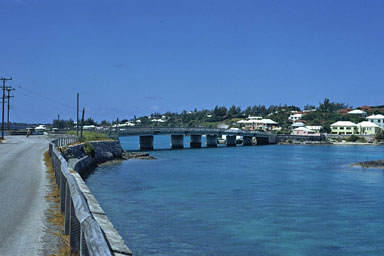 According to Wikipedia,
Kodachrome was invented in the early 1930s by two professional
musicians, which seems somehow fitting, and Kodachrome Basin State Park
in Utah is named for it - presumably the only geographic site in the
world named after a brand of photographic film. Ultra sharp, a 35
millimeter (24 mm x 36 mm) Kodachrome transparency can support up to a
rough equivalent of 20 megapixels of data resolution.
According to Wikipedia,
Kodachrome was invented in the early 1930s by two professional
musicians, which seems somehow fitting, and Kodachrome Basin State Park
in Utah is named for it - presumably the only geographic site in the
world named after a brand of photographic film. Ultra sharp, a 35
millimeter (24 mm x 36 mm) Kodachrome transparency can support up to a
rough equivalent of 20 megapixels of data resolution.
Kodachrome's high quality imagery is afforded by the complex subtractive processing method (Kodachrome actually records a monochromatic image when exposed, with the three primary colors added via dye couplers in three steps during processing) that made it unique among the many types of transparency films. Processing Kodachrome is highly demanding both in technical expertise and hardware, and emphatically not a do-it-yourself proposition, nor is it environmentally friendly.
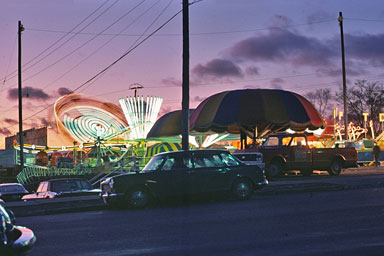 Kodachrome had a great run, but its
time is past, perhaps not entirely for the better, but the old order
changeth.
Kodachrome had a great run, but its
time is past, perhaps not entirely for the better, but the old order
changeth.
As part of a tribute to Kodachrome Film, Kodak will donate the last rolls produced to George Eastman House International Museum of Photography and Film in Rochester, which houses the world's largest collection of cameras and related artifacts. Renowned professional photographer Steve McCurry will shoot one of those last rolls and the images will be donated to Eastman House, which, if you're in upstate New York, is well worth visiting.
Kodak estimates that its current sales pace, supplies of Kodachrome film will last until early this fall.
For a sampling of what Kodachrome is capable of, Kodak has posted a slideshow online. There is also a tribute page, with video links and more photos, as well as a comments board.
Join us on Facebook, follow us on Twitter or Google+, or subscribe to our RSS news feed
Charles Moore has been a freelance journalist since 1987 and began writing for Mac websites in May 1998. His The Road Warrior column was a regular feature on MacOpinion, he is news editor at Applelinks.com and a columnist at MacPrices.net. If you find his articles helpful, please consider making a donation to his tip jar.
Links for the Day
- Mac of the Day: PowerBook 1400, introduced 1996.10.01. Considered by many the best pre-G3 PowerBook with a small footprint and great keyboard.
- Support Low End Mac
Recent Content
About LEM Support Usage Privacy Contact
Follow Low End Mac on Twitter
Join Low End Mac on Facebook
Favorite Sites
MacSurfer
Cult of Mac
Shrine of Apple
MacInTouch
MyAppleMenu
InfoMac
The Mac Observer
Accelerate Your Mac
RetroMacCast
The Vintage Mac Museum
Deal Brothers
DealMac
Mac2Sell
Mac Driver Museum
JAG's House
System 6 Heaven
System 7 Today
the pickle's Low-End Mac FAQ
Affiliates
Amazon.com
The iTunes Store
PC Connection Express
Macgo Blu-ray Player
Parallels Desktop for Mac
eBay

